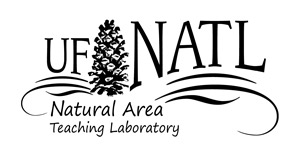Moss
This inventory of moss in the various ecosystems of the NATL was conducted by Brandon Corder with his project advisor, Dr. Stuart McDaniel. The inventory took place between January and July of 2017. The project was supported by a $500 NATL Minigrant. The team’s final report is here.
|
Bryum argentum
Habitat: This cosmopolitan species is found on sandy soils and on moist areas of asphalt or crevices in parking lots and sidewalks.
Key Characteristics: This species has a silvery appearance, especially when it is dry. This is due to the hyaline (glass-like) structures on the tips.
|
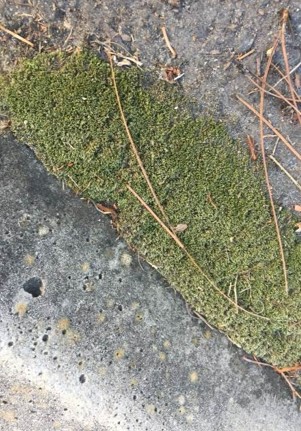
|
|
Cryphaea glomerata
Habitat: This moss grows on the trunks of hardwood trees in moist areas.
Distinct characteristics: When wet, the scraggly stems reach out into the air. Spore capsules are sessile rather than stalked.
|
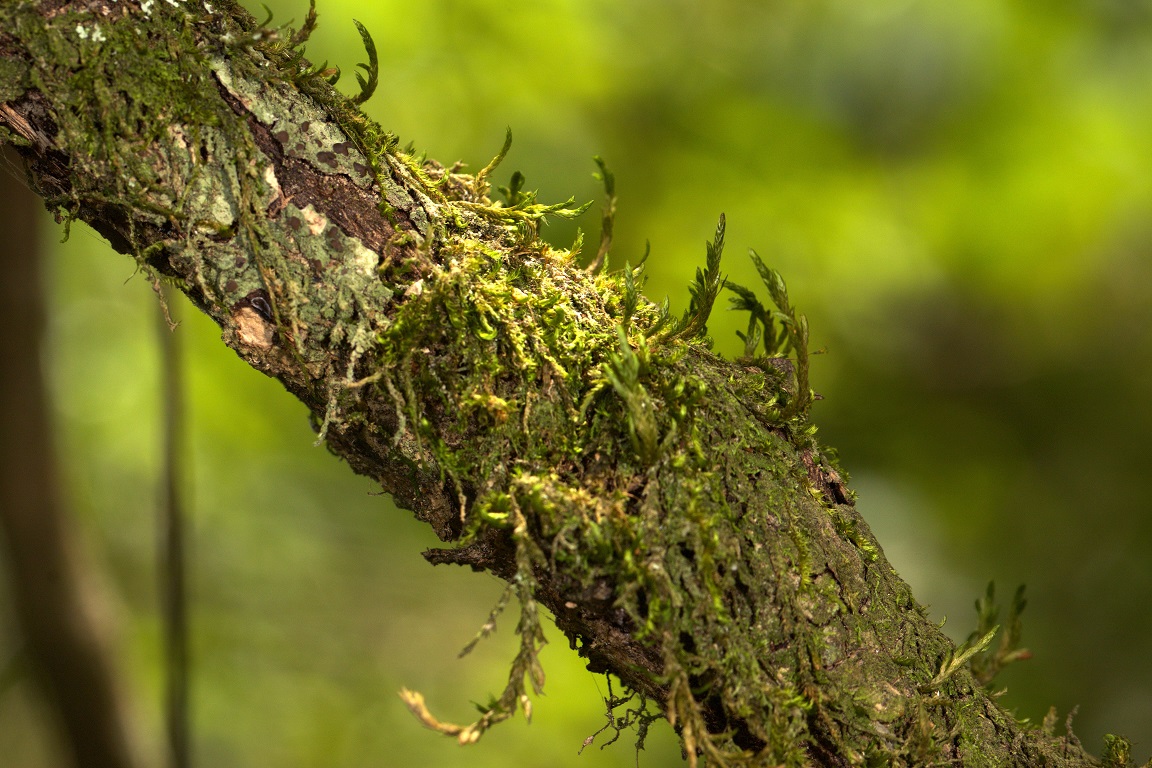
|
Funaria hygrometrica
Habitat: In NATL, this species is found on moist soil, rocks, or walls. It can also be found on surfaces that were previously burned.
Distinct characteristics: Funaria have leaves in erect rosettes rather than creeping stems. A condition referred to as acrocarpy. |
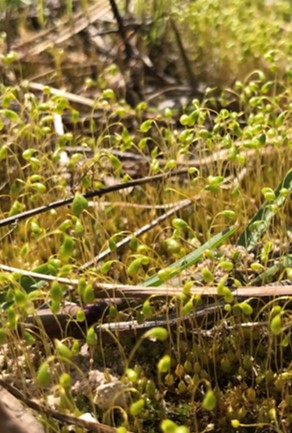 |
Leptodictyum riparum
Habitat: This moss can be found on tree trunks or rocks that are partially submerged in lakes and rivers.
Fun Fact: This moss is commonly cultivated for the aquarium trade. It is tolerant of both high and low nutrient levels. |
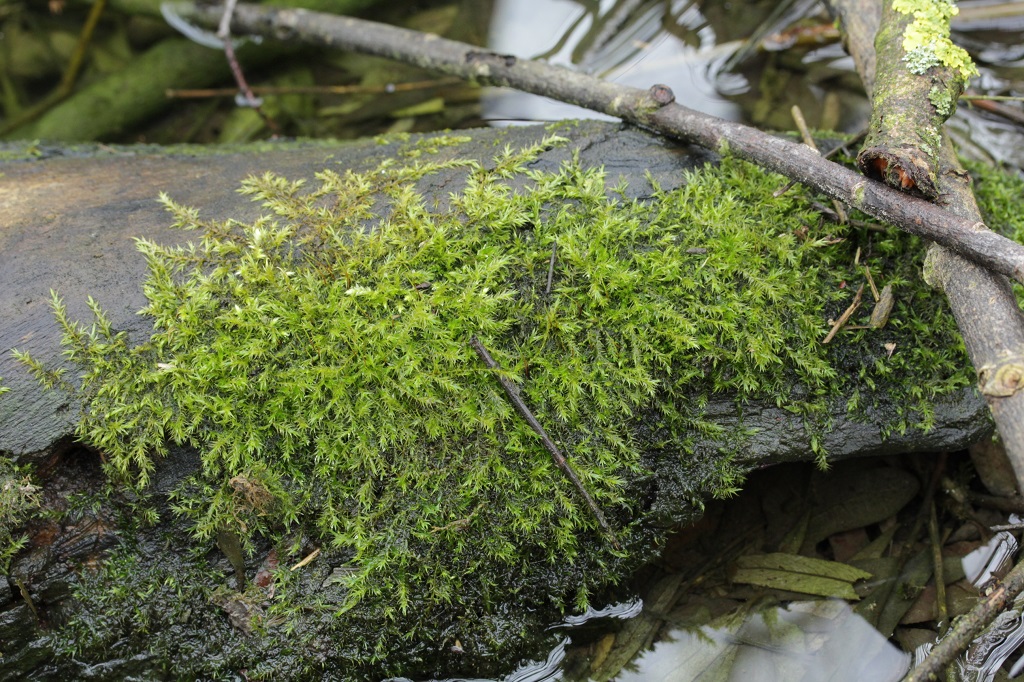 |
|
Leucobryum albidum
Habitat: This moss is commonly found on both sandy and humus-rich soil in Florida.
Distinct characteristics: In dry conditions, the multiseriate finger-like leaves are nearly paper white; when moisture is available, these mosses form thick green mats.
Cool Fact: These are also known as cushion mosses.
|
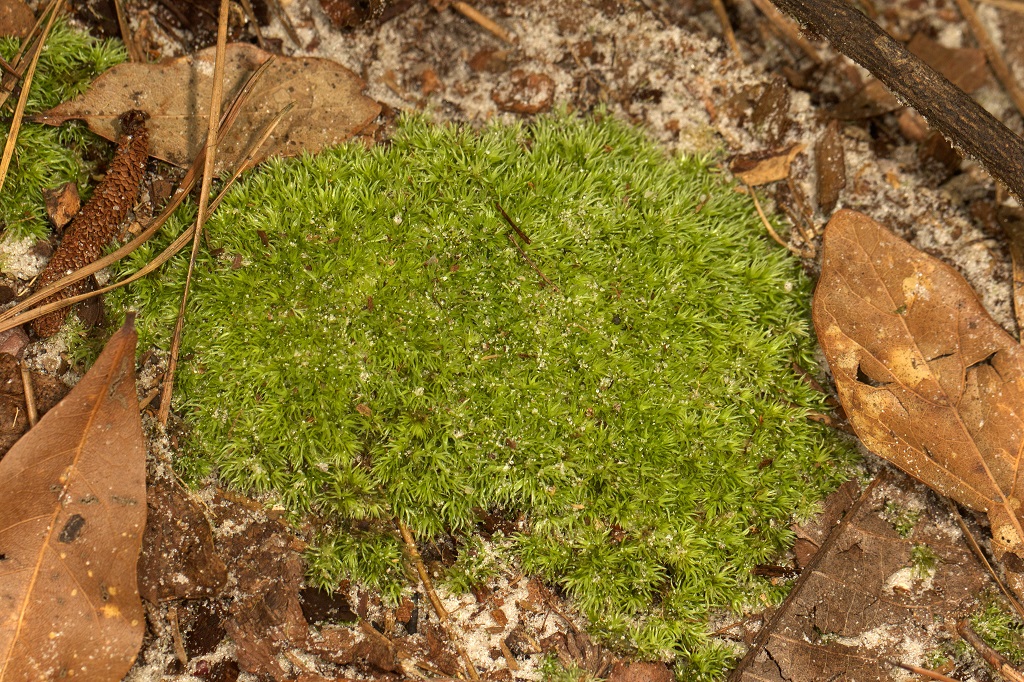 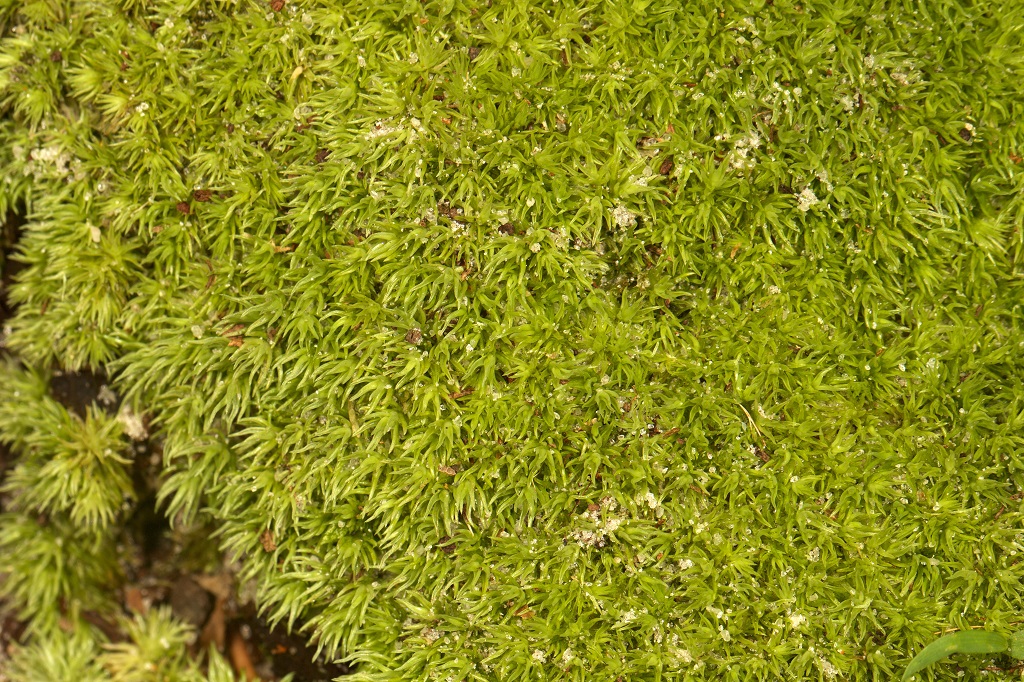 |
|
Octoblepharum albidum
Habitat: This moss grows primarily on palm trunks.
Distinct characteristics: Octoblepharum albidum has thick, multiseriate leaves which are tongue-shaped.
|
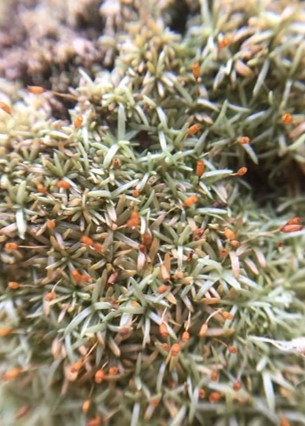
|
|
Oxyrrhinchium hians
Habitat: Grows on a variety of surfaces and in many conditions
Distinct characteristics: This species is difficult to identify because it grows in many conditions with different growth forms. It is a glossy, delicate moss. One common growth form is in tangled mats of densely crowded branches.
|
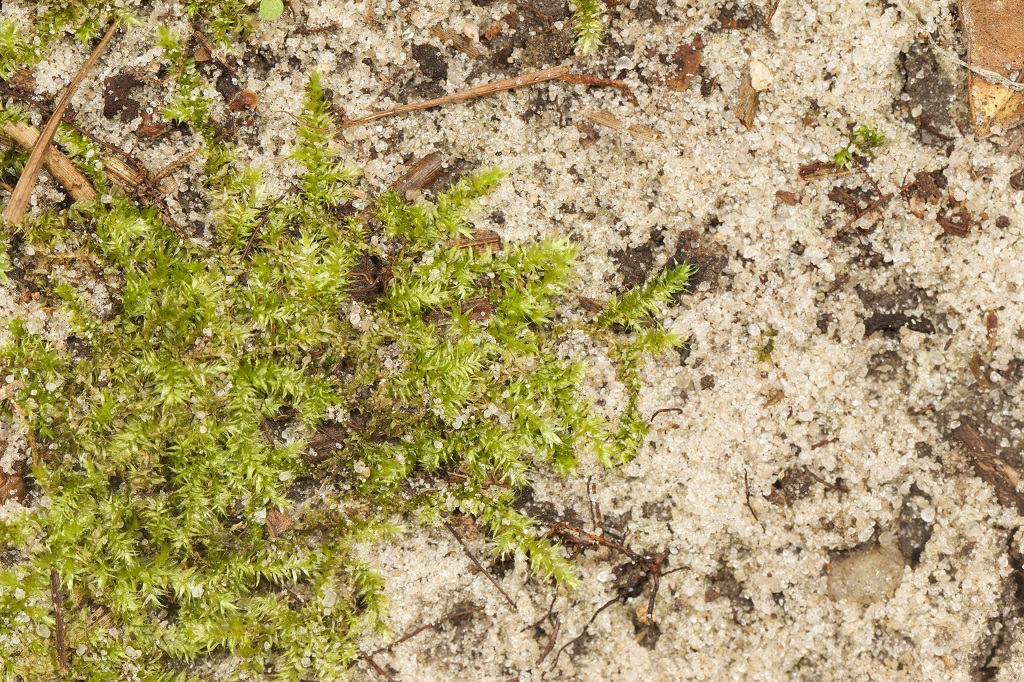 |
Thuidium delicatulum
Habitat: Found on a variety of surfaces.
Key Characteristics: This moss has highly-divided branches, giving a striking fern-like appearance when wet. Thuidium mosses are often dull-hued and are distinguished by microscopic bumpy projects on their cell surfaces.
|
.jpg) |
Isopterygium tenerum
Habitat: In NATL, this species is found on the moist bases of hardwood trees
Key Characteristics:Similar to other mosses in the family Hypnaceae, Isopterygium species have a creeping habit and noticeably glossy appearance.
|
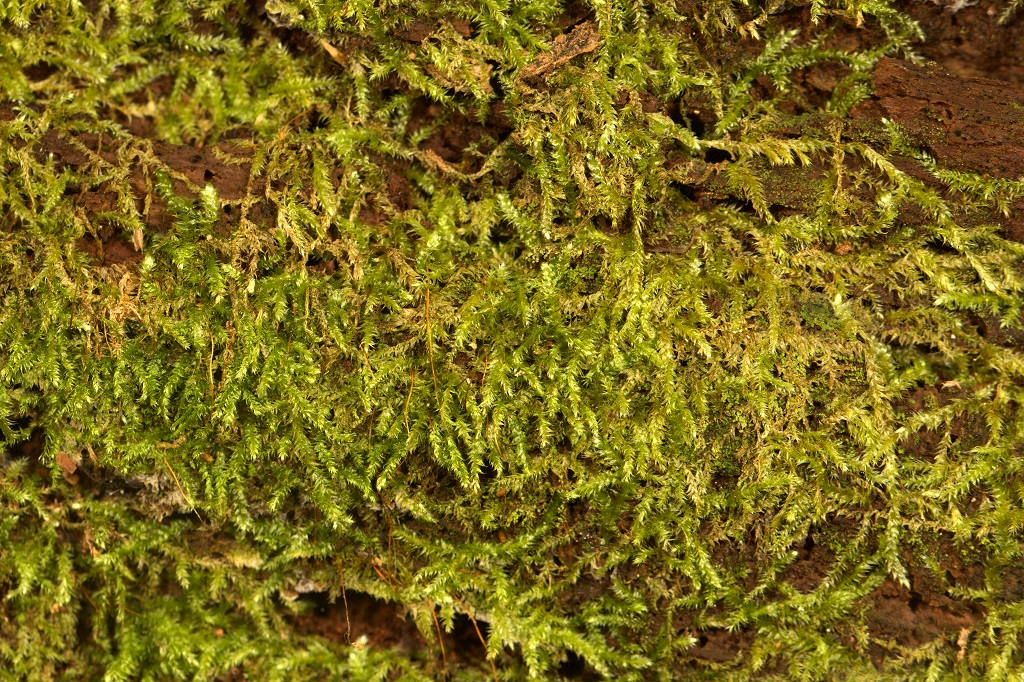
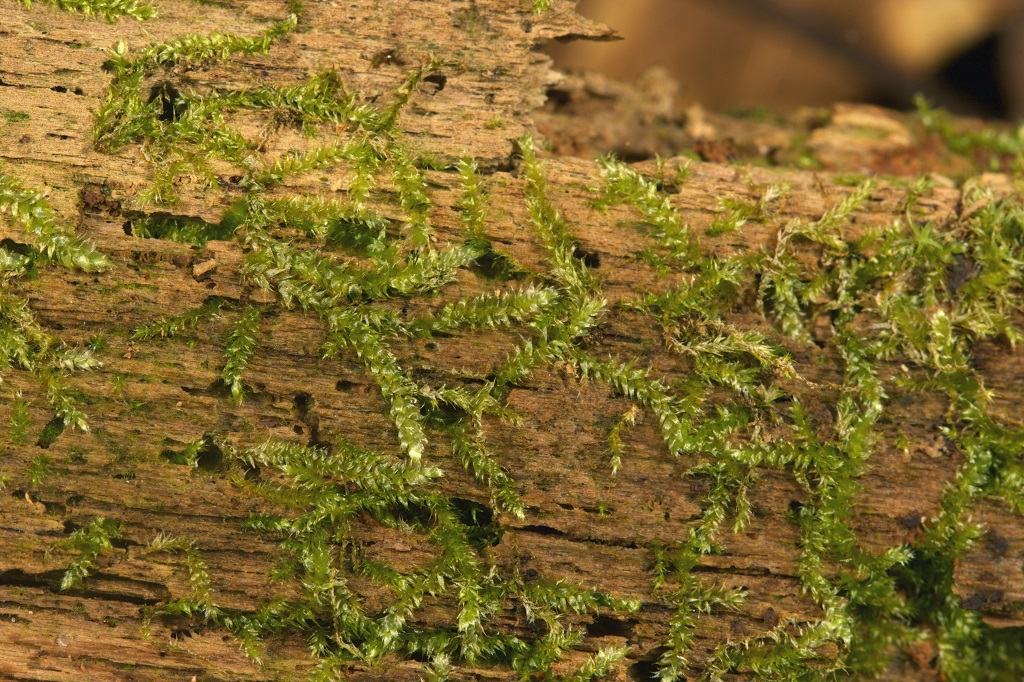
|









.jpg)


